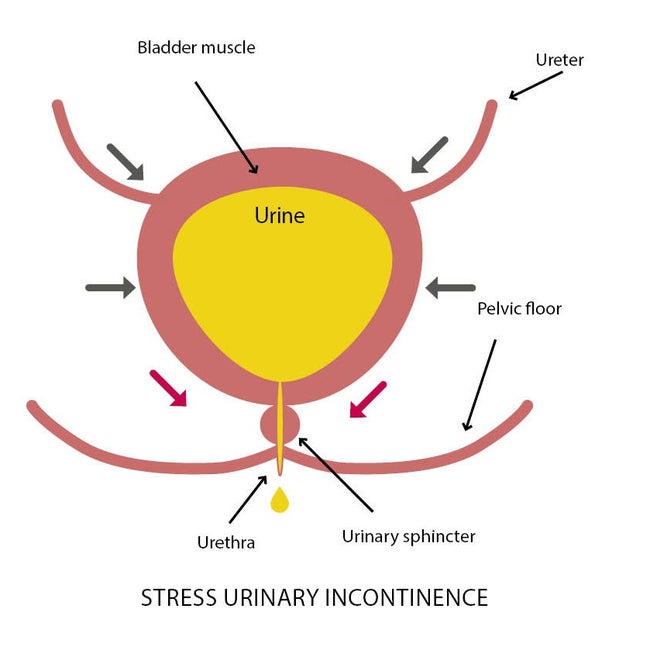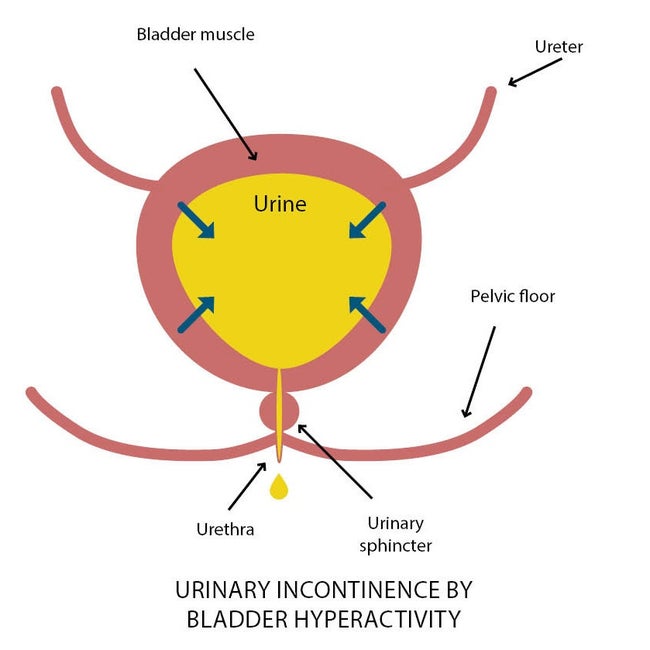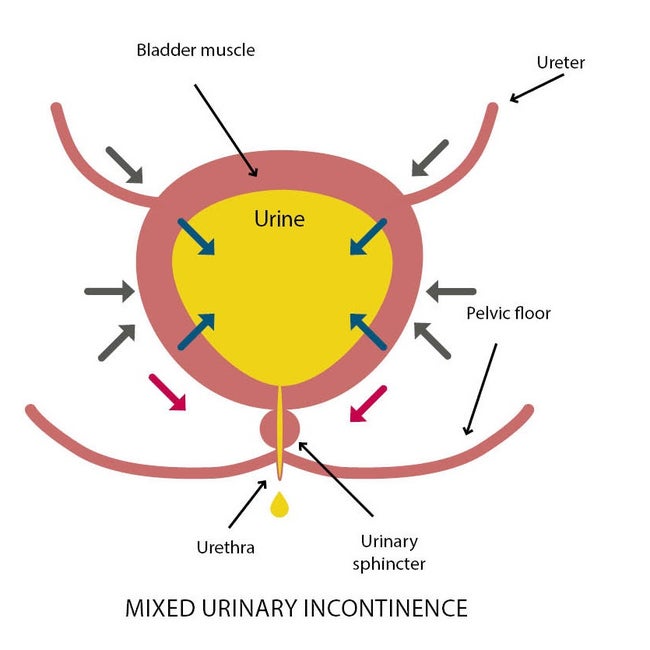What is urinary incontinence
Millions of women around the world are suffering from stress urinary incontinence. In France alone, this affects more than 3 million women, in the USA the number is estimated to be approximately 20 million. Women of all ages are affected: young women, middle-aged women or seniors.*
Urinary incontinence can have many different causes, can develop in varying degrees of severity. There are three main types of urinary incontinence, among them we can find also the stress urinary incontinence:
*Estimated data
Stress urinary incontinence
Stress urinary incontinence is characterised by an involuntary leakage of urine without the urge to urine. It principally occurs during an effort such as coughing, laughing, sneezing or even when practicing a physical activity due to the intraabdominal pressure which suddenly rises and generates a peak of pressure on the bladder.
Principal causes:
- Multiple pregnancies
- Difficult deliveries due to the weight of the baby (more than 4kg at birth)
- A small pelvis
Urinary incontinence by bladder hyperactivity
Urinary incontinence by bladder hyperactivity, also known as urge urinary incontinence, is characterized by the involuntary loss of urine preceded by an urgent and irrepressible need to urinate resulting in urination that can not be delayed.
Principal causes:
- Neurological diseases such as Parkinson disease, urinary tract infections or bladder diseases (stones and polyps).
Mixed urinary incontinence
How to deal with stress urinary incontinence?
Nowadays, different well-known solutions such as pelvic floor muscle training and surgery are available to women who suffer from stress urinary incontinence. However, there is no alternative between these two solutions except diapers which are considered as a palliative solution. Despite medical progress on Stress Urinary Incontinence, it is still a taboo topic and only 1 out of every 12 people affected by incontinence seeks for help(1).
Current solutions to deal with stress urinary incontinence:

Pelvic floor muscle training
Pelvic floor muscle training, alone or associated to biofeedback or with electrical stimulation can be done by a physiotherapist or a midwife. It is the first-line treatment indicated to women who suffer from stress urinary incontinence before going to surgery. Pelvic floor muscle training is effective and sometimes heal the patient with small leakages but it is not sufficient for sportive ladies or women who practice intense activities (2).

Diapers and other protections
Diapers and other protections are available in different sizes and anatomic forms such as absorbant panties and disposable waterproof mattress protectors (2).

Surgery
Surgery can be recommended by an urologist and/or a gynecologist. It can be proposed in case of abscense of improvment of the symptoms after a well-conducted rehabillitation (10 to 20 sessions). Different methods are available: Suburethral strips, bulking agent and artificial sphincters (2).
And now Diveen®
Diveen®, the innovative non surgical device, as simple as a tampon to apply, that reduces frequency of urinary leakages by 69% in average(3).
Reference:
1. National Association for continence.org-nafc
2. Rapport sur le thème de l'incontinence urinaire - Pr. F. Haab 2007
3. Cornu J.N et al. 75NC007 device for noninvasive stress urinary incontinence management in women: a randomized contol trial. International UrogynecologyJournal 2012.



